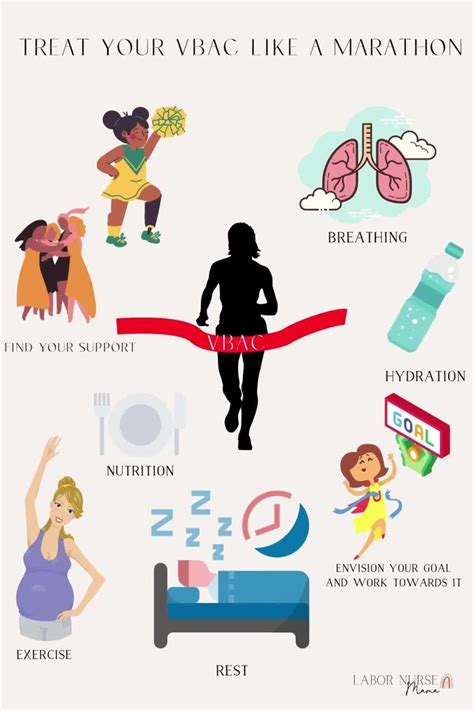Intro
Recovering from a C-section requires careful postpartum care, wound healing, and pain management to ensure a smooth recovery and minimize complications, promoting optimal maternal health.
Recovering from a C-section can be a challenging and overwhelming experience for new mothers. The physical and emotional toll of a cesarean delivery can be significant, and it's essential to understand what to expect during the recovery process. A C-section is a major surgical procedure that requires careful planning, execution, and aftercare to ensure a smooth and successful recovery. In this article, we will delve into the world of C-section recovery, exploring the benefits, working mechanisms, steps, and other key information related to the topic.
The importance of proper recovery cannot be overstated, as it plays a crucial role in the overall health and well-being of the mother and baby. A well-planned recovery strategy can help minimize complications, reduce pain and discomfort, and promote a speedy return to normal activities. Moreover, understanding the recovery process can help new mothers feel more in control and empowered, which is essential for their emotional and mental well-being. Whether you're a first-time mom or a seasoned pro, recovering from a C-section requires patience, dedication, and the right guidance.
As we explore the topic of C-section recovery, it's essential to recognize the significance of this procedure in modern obstetrics. With over 30% of births in the United States being delivered via C-section, it's clear that this procedure is a vital component of maternal healthcare. However, the recovery process can be complex and multifaceted, involving physical, emotional, and psychological aspects. By providing a comprehensive overview of C-section recovery, we aim to educate and support new mothers, helping them navigate this critical period with confidence and clarity.
Understanding The C-Section Procedure

The benefits of a C-section include reduced risk of complications during delivery, such as fetal distress or umbilical cord prolapse. Additionally, a C-section can be a lifesaving procedure in emergency situations, such as placental abruption or uterine rupture. However, like any surgical procedure, a C-section carries risks and potential complications, such as infection, blood clots, and respiratory problems. By understanding the procedure and its associated risks, new mothers can make informed decisions about their care and take steps to minimize potential complications.
Preparation For Recovery
Preparation for recovery begins before the C-section procedure. New mothers should discuss their recovery plan with their healthcare provider, including pain management, wound care, and postoperative follow-up. It's essential to have a support system in place, including a partner, family, or friends, to help with daily activities and childcare. A well-planned recovery strategy can help minimize complications and promote a smooth transition to motherhood.Some key things to consider when preparing for recovery include:
- Creating a birth plan that outlines preferences for pain management, wound care, and postoperative follow-up
- Discussing breastfeeding options with a lactation consultant
- Arranging for help with daily activities, such as household chores and childcare
- Preparing meals and snacks in advance to ensure a healthy and balanced diet
- Having a comfortable and supportive environment for recovery, including a comfortable bed and pillows
Physical Recovery

It's essential to follow the healthcare provider's instructions for wound care, including changing dressings, applying topical antibiotics, and monitoring for signs of infection. New mothers should also be aware of potential complications, such as blood clots, respiratory problems, or bowel obstruction, and seek medical attention immediately if they experience any concerning symptoms.
Some key things to consider during physical recovery include:
- Managing pain effectively to promote comfort and reduce stress
- Promoting wound healing through proper care and nutrition
- Preventing complications, such as blood clots or respiratory problems, through early mobilization and deep breathing exercises
- Gradually increasing physical activity, such as walking or stretching, to promote recovery and reduce fatigue
- Getting enough rest and sleep to support physical and emotional healing
Emotional Recovery
Emotional recovery from a C-section involves coping with the emotional and psychological aspects of the procedure. New mothers may experience feelings of anxiety, depression, or trauma, particularly if the C-section was unplanned or unexpected. It's essential to have a support system in place, including a partner, family, or friends, to help with emotional recovery.Some key things to consider during emotional recovery include:
- Seeking support from a mental health professional, such as a therapist or counselor, if experiencing anxiety, depression, or trauma
- Connecting with other new mothers who have had a C-section to share experiences and advice
- Practicing self-care, such as meditation, yoga, or deep breathing exercises, to reduce stress and promote relaxation
- Focusing on positive aspects of the birth experience, such as the health and well-being of the baby
- Allowing oneself time to heal and recover, both physically and emotionally, without putting too much pressure on oneself
Returning To Normal Activities

Some key things to consider when returning to normal activities include:
- Gradually increasing physical activity, such as walking or stretching, to promote recovery and reduce fatigue
- Resuming daily routines, such as household chores or childcare, gradually and with support
- Avoiding heavy lifting, bending, or strenuous exercise for several weeks after the procedure
- Getting enough rest and sleep to support physical and emotional healing
- Focusing on nutrition and hydration to promote recovery and support breastfeeding
Breastfeeding After A C-Section
Breastfeeding after a C-section involves some unique challenges and considerations. New mothers may experience difficulty with latching or milk production, particularly if they have had a general anesthesia or are experiencing pain or discomfort. However, with proper support and guidance, many new mothers are able to successfully breastfeed after a C-section.Some key things to consider when breastfeeding after a C-section include:
- Seeking support from a lactation consultant or breastfeeding specialist
- Using a comfortable and supportive nursing pillow to promote good latching and milk production
- Practicing good wound care and pain management to reduce discomfort and promote breastfeeding
- Focusing on frequent feeding and skin-to-skin contact to promote milk production and bonding
- Being patient and persistent, as breastfeeding may take some time to establish after a C-section
Conclusion And Next Steps

As you navigate the recovery process, remember to prioritize your physical and emotional well-being, seek support from loved ones and healthcare professionals, and focus on the positive aspects of your birth experience. With time, patience, and the right guidance, you can overcome the challenges of C-section recovery and thrive as a new mother.
We invite you to share your experiences, ask questions, or provide feedback on this article. Your input is invaluable in helping us create informative and supportive content for new mothers. Please feel free to comment below or share this article with others who may benefit from this information.
What are the benefits of a C-section?
+A C-section can reduce the risk of complications during delivery, such as fetal distress or umbilical cord prolapse. It can also be a lifesaving procedure in emergency situations, such as placental abruption or uterine rupture.
How long does it take to recover from a C-section?
+Recovery from a C-section can take several weeks to several months. The length of recovery will depend on individual factors, such as the complexity of the procedure, overall health, and presence of any complications.
Can I breastfeed after a C-section?
+Yes, many new mothers are able to successfully breastfeed after a C-section. However, it may require some extra support and guidance from a lactation consultant or breastfeeding specialist.
What are the risks and potential complications of a C-section?
+The risks and potential complications of a C-section include infection, blood clots, respiratory problems, and bowel obstruction. It's essential to follow the healthcare provider's instructions for postoperative follow-up and clearance for physical activity to minimize these risks.
How can I promote physical and emotional healing after a C-section?
+Promoting physical and emotional healing after a C-section involves managing pain effectively, promoting wound healing, and preventing complications. It's also essential to focus on nutrition, hydration, and rest, as well as seeking support from loved ones and healthcare professionals.
